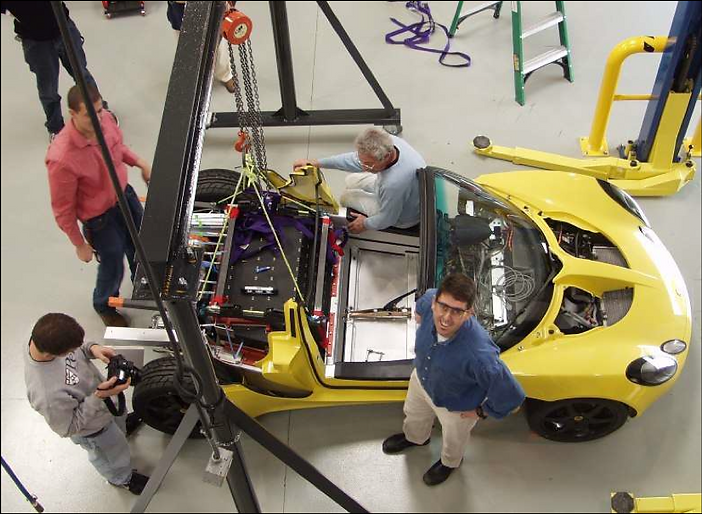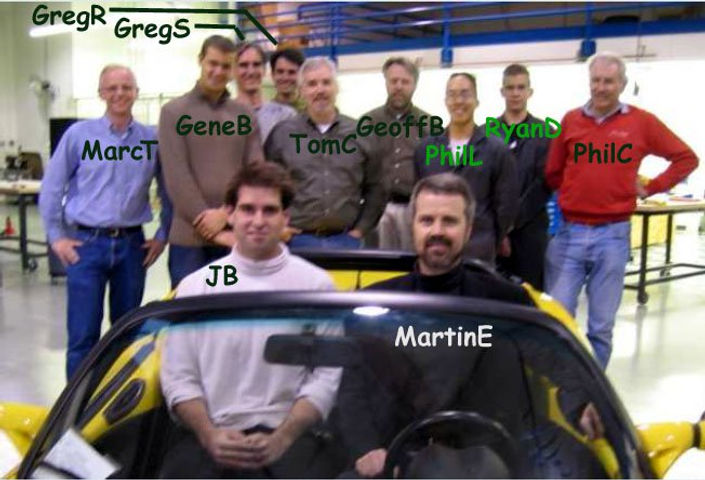Tesla Mule 1
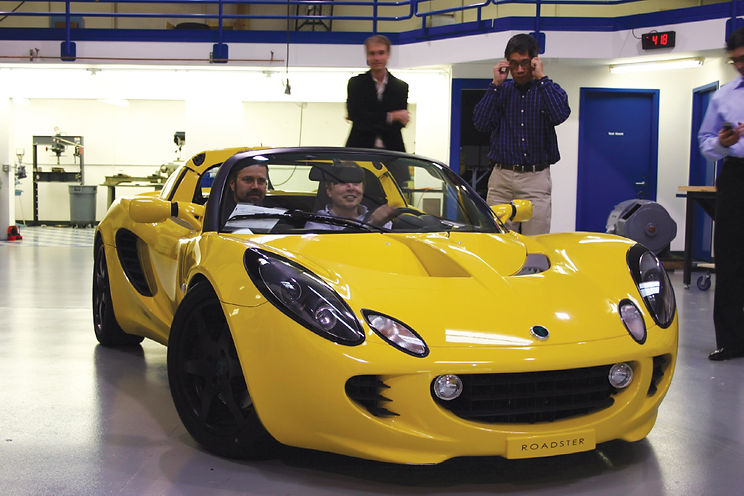
The very first Tesla
In July of 2004, a fledgling company by the name of Tesla Motors began assembling its first working prototype. The engineering team took the body of a Lotus -- the first spec Elise body in the United States -- and fitted it with an AC propulsion drivetrain and prototype battery pack. The vehicle was dubbed Mule 1. This marked the beginning of an automotive engineering revolution.
The legendary Tesla engineering team with their history-making creation

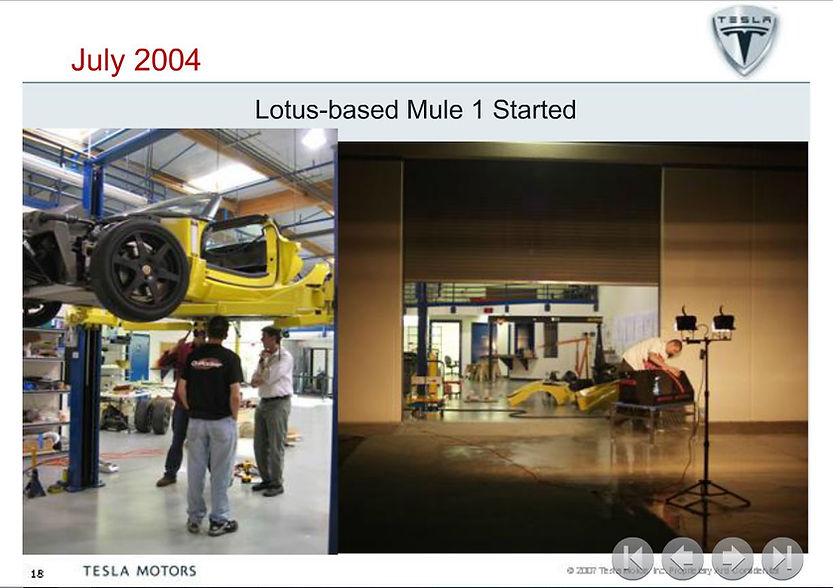
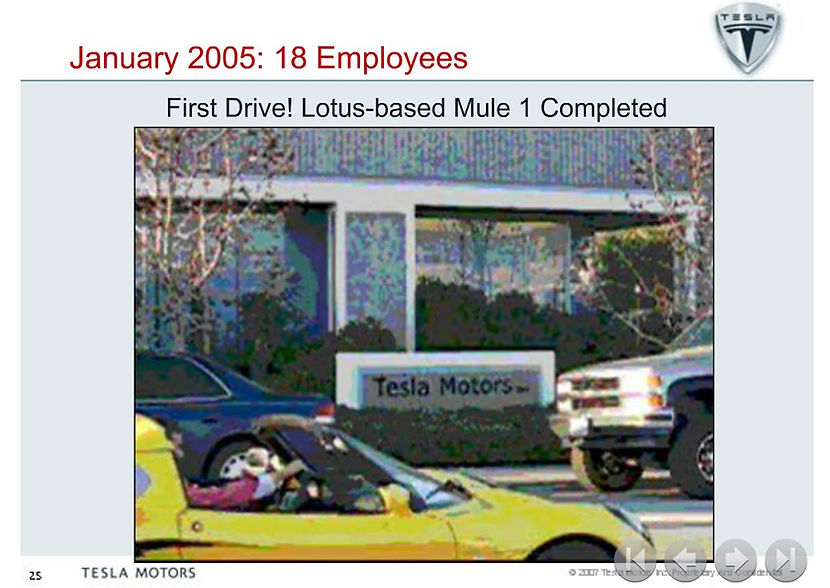
photo credit and original archived article
Tesla Mule 1 was built using the first spec Lotus Elise to enter the United States
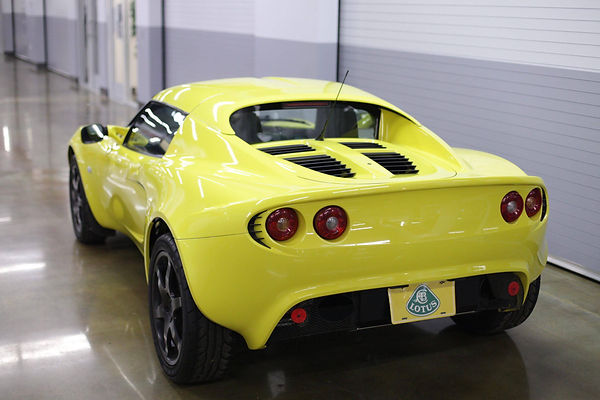
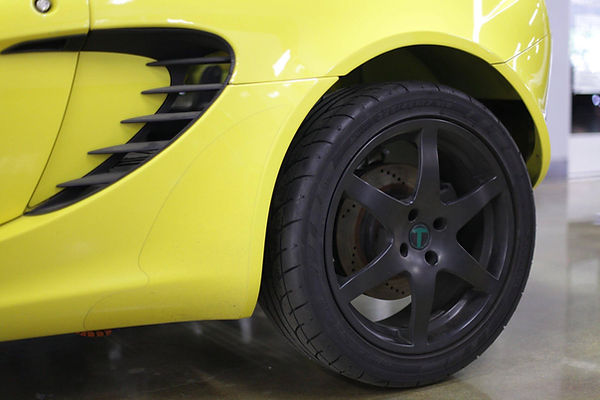
The TESLA Mule 1: Where It All Began
Jurjen Van Rhee | January 4, 2014
The yellow Elise-like looking slightly heightened beauty of a car is not just special since it looks good, but is actually an important piece of rolling history for not one but two very well known companies in the US. The first was a long established car company from Great Britain, the second a start-up lead by a guy named Elon Musk out of a facility in San Carlos, California. They had set out to create a high performance, high mileage electrical car. In short, this car is the first car Lotus USA ever brought into the United States and the first car Tesla used as a prototype for its groundbreaking roadster model. This is their Mule 1.
Exactly at that time is when Tesla first records working on this Lotus based Mule 1 in their facility in San Carlos. They were working hard on the technology needed to change the battery assembly. Alterations were needed since the existing batteries would not fit the Elise shell. In October of that year they started out with designing the drivetrain components, based on technology they licensed from AC propulsion. It is not clear whether this yellow car had the licensed motor from AC propulsion or the modified Tesla unit. Maybe it was a test car for the final roadster engine. Since this is their first development car it is possible that all options were right somewhere in its life. Just one month after designing the drivetrain components they started to fit the drivetrain into this car, and in January 2005 it got its maiden voyage on California roads.
It is unclear when they stopped using Mule 1 as the main development car. They started building their own chassis for Mule 2 in June 2005 and fitted a drivetrain in that chassis in September of the same year. This second car did actually look like the Tesla Roadster we know now, and they first drove it in January 2006. Final testing was done in ten engineering prototypes (EP’s). Further on they built several validation prototypes for road and collision testing early in 2007. The first customer cars were delivered in the fourth quarter of 2007. Somewhere in the following years Tesla sold this car, the Mule 1. Exact reasons are unknown, but the start-up company may have needed the space or money. The guy who bought it planned on building a track car out of it but never started the conversion. He then listed it for sale on an online Lotus community where it was bought by Rob Dietsch from Dietschwerks, a Lotus specialist based in San Jose, CA. He recognized the car for what it was and brought it home to his shop in San Jose.
Looking at it now, it has a strange look to it. When the car left Tesla, they held on to the electric motor and all other drivetrain parts. It still lacks an engine to this day. Just putting a regular Elise engine in it is not really a viable option, since the Tesla engineers did a lot of chassis alterations in order to fit the new drivetrain. There is a lot of fabrication still visible. Some of the components used still have a bar code on them, like they just drove to Home Depot and got some aluminum strips to work with. There are more clearly visible modifications. Biggest thing; the firewall is completely gone. They had to remove it completely in order to fit the drivetrain and the batteries. Furthermore there are lots of glued components and wiring still visible, showing that this is really a prototype test car. The drivetrain removal process looks like a rush job. They just cut the wiring and took it out of the car. No clean removal, just a pair of scissors and the electrical drivetrain was gone.
When first looking at the drivers compartment, nothing clearly visible has changed. Although if you look closely, there is no gear knob since there is no need to change gears in an electric car. The radio is still there, and the heater switches have been modified to work as control units for various testing components. They are wired to the non-present drivetrain so it is a bit of a guess what they are for. Rob guesses that they are for fine tuning things like the brake energy recovery system and the amount of ‘engine braking’ that is required for it. After all, it was their first shot at building an electric sports car.
On the outside it looks like an Elise, nothing more. There are a few tiny differences. It bears a green ‘T’ on a black background as a badge on the nose, and one of the wheels. Without the engine it sits further from the ground than it should, and it looks a little weird since there is no exhaust present.
So what will become of this yellow piece of historic automobile? It will probably never become road legal in the USA and it will take some effort to put a combustion engine in there, due to all the modifications. Spare Tesla development engines are not readily available, in fact there is only one. I heard someone at Tesla holds on to it. There basically is just one right way of doing it. Get the original car and drivetrain back together and make sure that they stay together. It belongs in Tesla’s museum or in the hands of someone who appreciates this piece of history for what it is. Rob Dietsch is such a guy. I would love to see Rob and Tesla team up to bring this car back to life and show it off the general public. The car that started off the most promising car manufacturer of the 21st century? That’s certainly worth preserving.
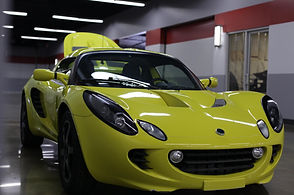
.jpg)
_JPG.jpg)
.jpg)
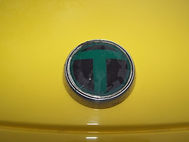
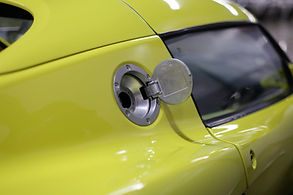
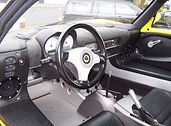
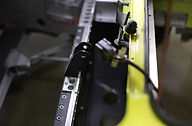
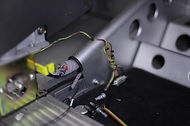
_JPG.jpg)
